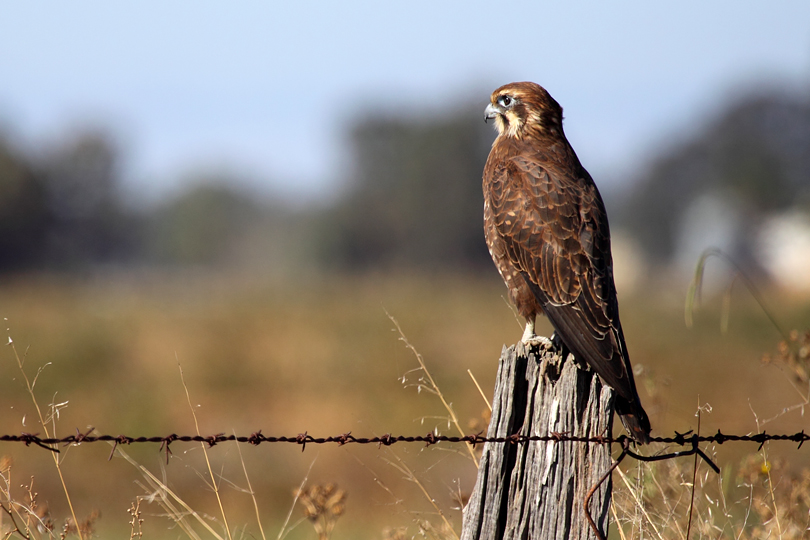
Falco berigora
SUBFAMILY
Falconinae
TAXONOMY
Falco berigora Vigors and Horsfield, 1827, New South Wales.
OTHER COMMON NAMES
English: Brown hawk; French: Faucon bйrigora; German:
Habitchfalke; Spanish: Halcуn Berigora.
PHYSICAL CHARACTERISTICS
16.1–20.1 in (41–51 cm); male 0.7–1.3 lb (316–590 g), female
0.9–1.9 lb (430–860 g). A medium-sized long-legged, buteolike
falcon. Adults extremely variable: from tan and buff to
chocolate brown with variable white underparts (males tend to
have more white), to near black all over (with some barring
visible in wing and tail). Juveniles brown with buff touches to
forehead, nape, and vent. Some regional variation in predominant
color. Tend to be darker in humid areas, paler in arid areas,
smaller in tropics, larger in temperate zone.
DISTRIBUTION
Australia and New Guinea, except highlands.
HABITAT
Open woodland, savanna, grassland, farmland, and desert up to
about 6,600 ft (2,000 m).
BEHAVIOR
Adults sedentary. Gathers in sometimes large flocks postbreeding,
especially at fires and locust and mouse plagues,
sometimes with other raptors.
FEEDING ECOLOGY AND DIET
Versatile and opportunist hunter: takes prey from perch, hover,
in direct flight, or running over the ground. Occasionally robs
other raptors. Attracted to fires, cattle herds, farm machinery,
and livestock for the animals they flush. Pairs occasionally hunt
cooperatively. Feeds on fresh carrion but takes mostly live
prey: mammals, birds, reptiles (especially snakes), amphibians,
and large insects; rarely crabs and fish.
REPRODUCTIVE BIOLOGY
Breeds annually as solitary pair in stick nest of mainly corvids,
and other raptors and magpies Gymnorhina tibicen; rarely on a
man-made structure, tree fern, tree hole, cliff, or termitarium.
Lays mainly August–September in south, earlier in north.
Clutch 2–3, mostly three; incubation 33 days; young fledge at
five to six weeks.
CONSERVATION STATUS
Not threatened. Generally common and extremely widespread.
Expanded into forested areas turned to farmland and open
woodland.
SIGNIFICANCE TO HUMANS
Traditional significance and food to some aboriginal tribes, but
practice largely lapsed.
Other popular Animals
Photo Gallery of - Brown falcon
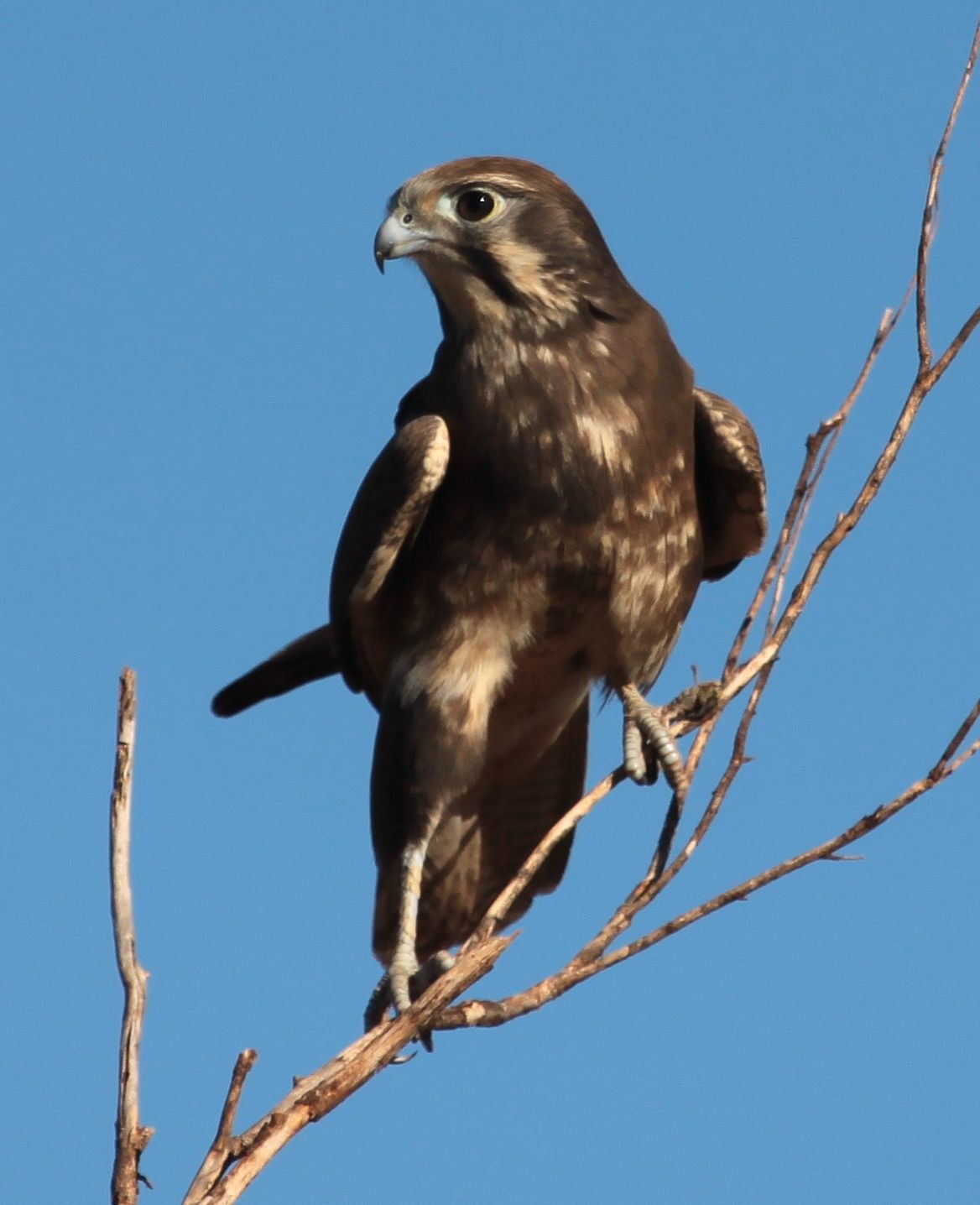
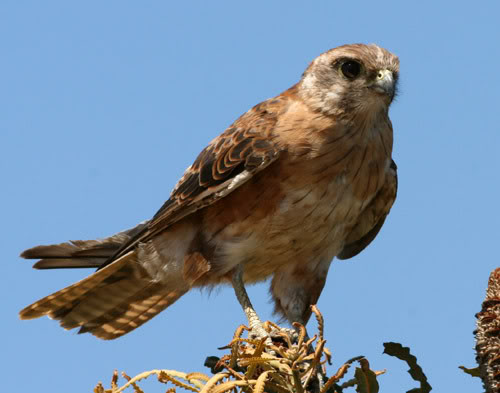
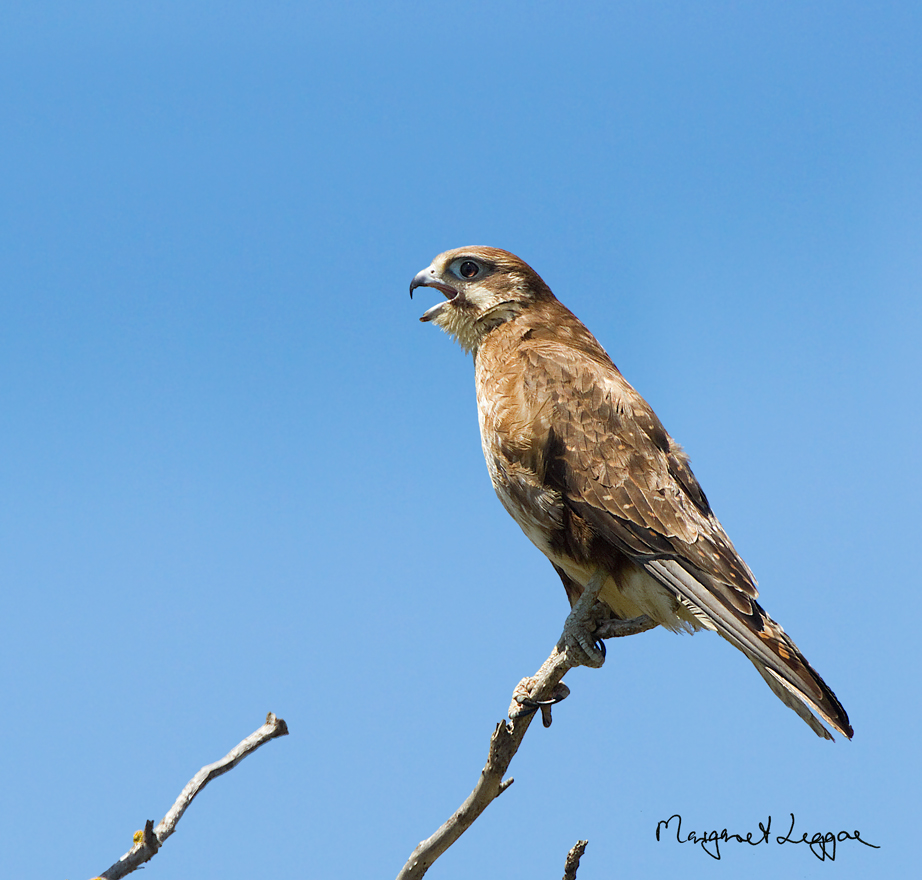
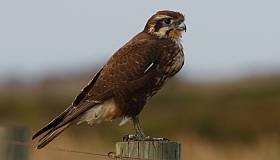
 Animalia Life
Animalia Life